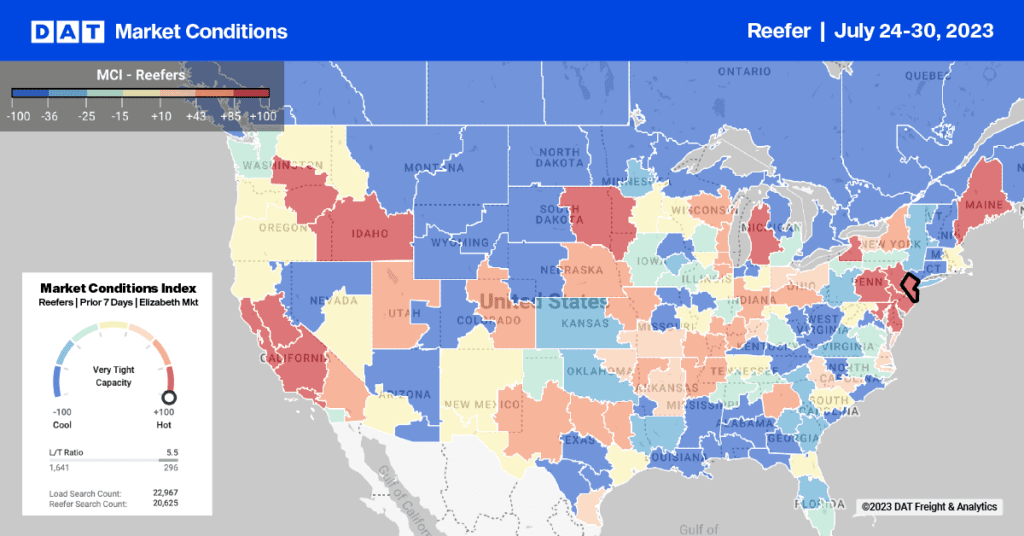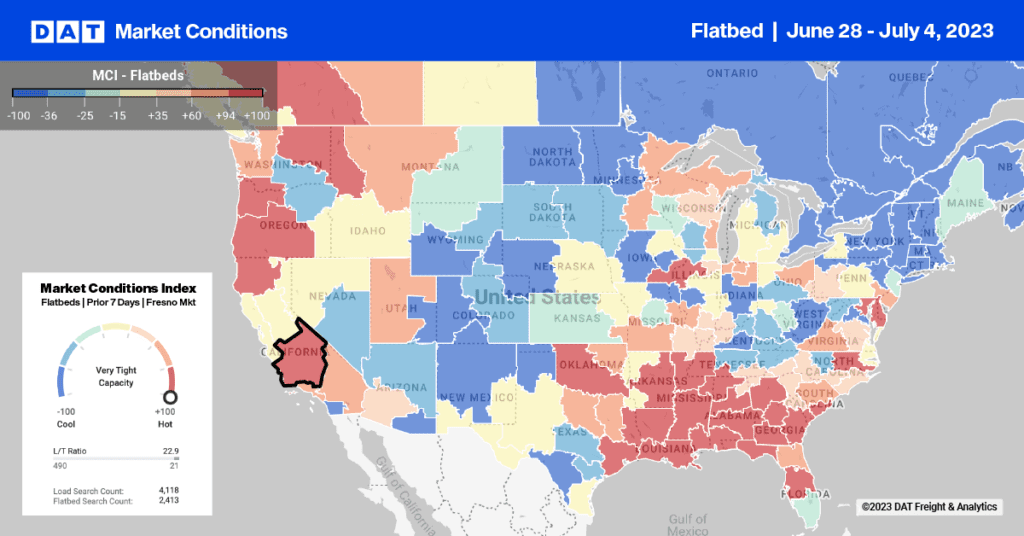Relief efforts for Hurricane Sandy are taking some trucks out of circulation just as last-minute freight is headed to stores for Thanksgiving and Christmas inventory. As a result of these and other factors, the spot market is booming with freight, which is back up to the unseasonably high level we saw in the final week of September and the close of Q3. Rates are trending up — more than 3% in one week — in six of the top 12 van markets, for example.
We can hardly rejoice at the increase in demand, when the storm wrecked the lives, homes and property of countless families and businesses. We can, however, reach out and offer our support by donating time, money and goods to the American Red Cross and other relief agencies. Commercial Carrier Journal profiled several transportation companies that have assisted in relief efforts, and some of the stories are inspiring. On the other hand, an article in Landline discussed some of the potential pitfalls of relief efforts.

Trucks were loaded with relief supplies and pre-positioned in Louisiana before Sandy made landfall, to hasten response as soon as roads were clear. (Photo credit: Daniel Llargues/FEMA)
For the past two weeks, the DAT Load Boards have seen double-digit percentage increases in load posts for vans and reefers. Flatbed loads increased last week but not the week before, suggesting that Sandy relief efforts began with consumer goods and food, and is only now including heavy equipment and larger construction supplies. If this trend continues, we may see more load posts in November than in October. That would be a first. DAT has been around since 1978, and the company has tracked monthly load posts in its North American Freight Index since 1996. For the past 26 years, there were fewer load posts on DAT in November than there were in October. If that pattern is reversed this year, I think we can pin it on Sandy.
Freight Boom Ignites Rates
The extra, counter-seasonal boom in demand is exerting pressure on rates, but not necessarily for freight moving into the Northeast. Of course, trucks can’t find many loads out of those areas, which suffered damage and prolonged power outages due to Sandy and last week’s unnamed Nor’easter. Many carriers must deadhead out of the storm zone, and the rate increase may not compensate them for those empty miles. The result is a rate increase that costs the shipper more but does not necessarily enrich the carrier. Hopefully, the situation will be back to normal in the Northeast soon, at least for the trucking industry.
Luckily for truckers, rates are trending up in major markets that are hundreds or even thousands of miles from the storm zone. In fact, the biggest gains were in lanes where both the pick-up and drop-off locations are nowhere near the Northeast. From Charlotte, Memphis, Houston and Dallas, to Chicago and even Seattle, van rates are up by more than 3% in a single week. Rates are taken from the weighted averages of the top outbound lane rates paid by brokers to carriers in those markets last week, as recorded in DAT Truckload Rate Index. [To speak with a representative about DAT Truckload Rate Index, send a request or call 800-551-8847.)
Reefer rates are up too, but in different markets and of course a different mix of cargo. Rates from Phoenix and McAllen are up 3% and 2% respectively in the past week, for trucks hauling fresh produce from Mexico. In Fort Worth, a regional hub, reefer rates are up 2.7%. Thanksgiving is next week, and consumers are increasingly demanding fresh ingredients for their holiday feasts. A few lanes are up due to Sandy as well: Phoenix to Elizabeth NJ and Atlanta to Philadelphia are up $0.25 per mile, restocking supermarket shelves in storm-affected areas.


